Growth Hacking Strategies: How 43 Founders Landed Their First Customers
Starting a business and launching a product is hard.
Landing your first paying customers is even harder.
Every day, companies with killer products fail. According to the US Small Business Administration, the failure rate for new startups is estimated to be around 70% to 80% in the first year, and only half of those remain in business over the next five years.
No matter what data you look at, or how you look at it, startup life is a grind.
Why do so many startups fail to get traction?
Sometimes it's poor product-market fit. Other times it's lack of funding. Often it's failing to get a product in front of the right people.
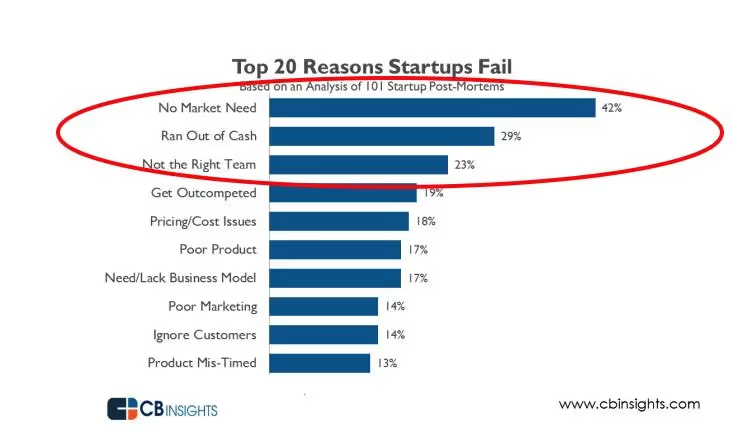
(Source)
Whether it's pre-launch or post-launch, failure lurks everywhere, especially in the early days.
So, how did companies like Zapier, Segment, WordStream and Pipedrive not only survive and land their first paying customers, but gain traction and grow into multi-million dollar businesses with hundreds of thousands of loyal customers?
We decided to go straight to the horse's mouth, and find the answer to that exact question. Our team reached out to the founders of 44 successful companies and asked the following question:
What growth strategies did you use to land your first paying customers?
The responses from each company's founder are compiled below. Some of the answers might surprise you :)
But first...
5 Common Growth Strategies Used By The Founders
#1: Do things that don't scale: If you've put a ton of work into a pre-launch strategy, gaining traction will be a little easier. But, this isn't the case for a
lot of companies. In the early days when you're laser-focused on getting those first people using, and paying for your product, you'll need to do things that
don't scale. From coffee and live demonstrations, to sending thousands of cold emails, do whatever it takes to seed your customer base.
#2: Build marketing into your product: Add functionality that forces engagement and makes it easy for people to share and advocate for your product.
#3: Leverage existing communities: Don't try to reinvent the wheel. Find where your ideal audience hangs out, and start conversations.
#4: Find your purple cow: It's harder than ever to stand out the marketplace. Make sure you are building something people actually want or need, and
make sure the experience is incredible.
#5: Let your customers "build" the product: Identify your ideal customers and get them involved in the development of the product. Solicit feedback from potential users,
bring that feedback to life, and sell it to them. Because that audience has a product that meets their exact needs, they'll get a ton of value, and happily share it with their network.
Those are just a few high-level insights from the founders.
Thirsty for more?
Read on...
43 Founders Reveal the Growth Hacking Strategies That Landed Their First Paying Customers

Jamil Velji
A big path for us was customer development.
In crafting the product that's now BuildFire, we spoke to hundreds of potential customers, trying to understand their key pains related to retaining and engaging customers. In that process, we found a lot of value in a platform that could cut through the noise of what most consumers face on a daily basis - torrents of emails, and ads from competing companies trying to capture business.
From those conversations, BuildFire was born. Thanks to all of the product development conversations, we had a direct line into many of the folks who's dream solution we actually built. That was our initial source of customers for BuildFire.
How did we find the people we spoke to?
It was old school. We tapped into some of the folks we knew. Specifically, our founders tapped into the local network of people they knew in the church vertical as it was one of the key areas they started in. Those connections and conversations led to other connections.
When the local networking hit a wall, we transitioned to outbound emails to open up additional conversations in the church vertical.
It was a lot of hustle!

Christopher Gimmer
Before we released Snappa to the public, we launched a side project called StockSnap.io which offered beautiful free stock photos. We knew that a lot of people searching for free stock photos would probably be interested in an easy to use graphic design tool. Once we officially launched Snappa, we started cross promoting the tool to visitors of StockSnap.io.
This tactic is now being referred to as "side project marketing" or "engineering as marketing".
As content marketing becomes more competitive, I think there's tremendous value in building a tool or microsite related to your main product and then cross-promoting.

Wade Foster
You don't need a growth strategy to get a paying customer. All you need is to find one person willing to pay.
For Zapier, that was sending emails to people I suspected might be interested in what our product offered. It didn't require any sort of detailed strategy. Just finding the people who might be interested and reaching out.
We looked on forums where people we're begging vendors for native integrations :)

Larry Kim

Tim Soulo
The very first customers of Ahrefs came from our founder being active at different niche forums/communities, and pitching our tool set there.
And because the product was really good, people started telling their friends about it.
From the very beginning our growth strategy relied on "good product" + "word of mouth", and it is still the case to this day.

Calvin French-Owen

Stuart McKeown
It took Gleam 5 months to reach 100 paying customers.

What did we learn along the way?
The term "do things that don't scale" couldn't be closer to the truth. If you've got a small network, you'll need to do things like cold emailing, cold calling, perform live demonstrations, and attend networking events much more often.
Here are a few things that helped Gleam.io get traction.
1. Asked questions
We emailed 30 businesses that ran contests and asked about their problems. What platforms did they use? What were the limitations? What features could make their lives easier?
These insights were the cornerstone of our MVP.
2. Understand the market
Once you have a product worth beta testing, the next step was to get users on board. We emailed 50 bloggers and offered them each a lifetime plan to help us test. This stage was critical to getting the MVP to a point where people would actually pay cold hard cash for it:
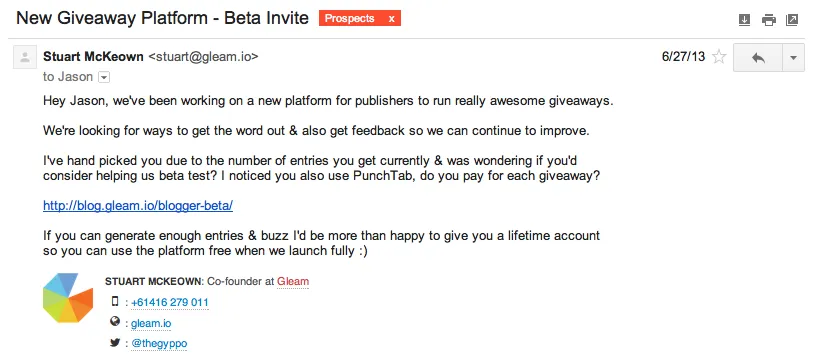
3. Sent 10 emails a day
For two months I sent 10 cold outreach emails every single day to prospects:
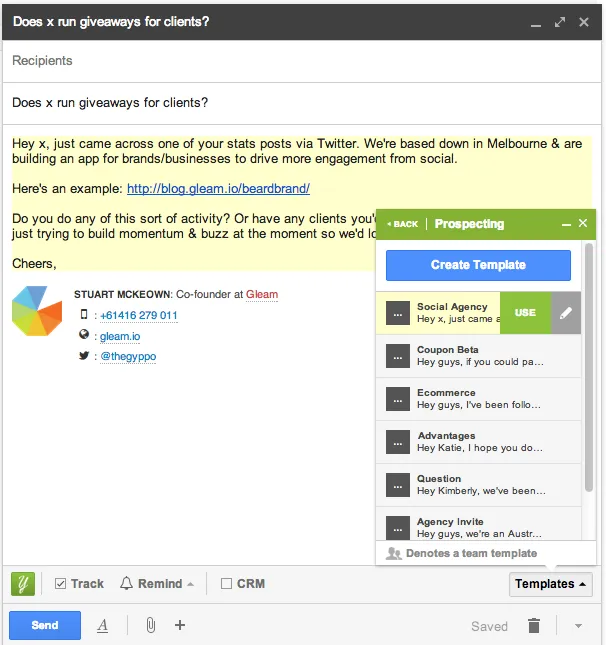
I had varying results:
- Emailing founders: 90% response rate
- Emailing marketing team: 50% response rate
- Using contact us/feedback forms: 10% response rat
If the email channel didn't wasn;t working, I found them on Twitter :)
Note: we often used keyword searches on social media sites like Twitter to find outreach prospects:
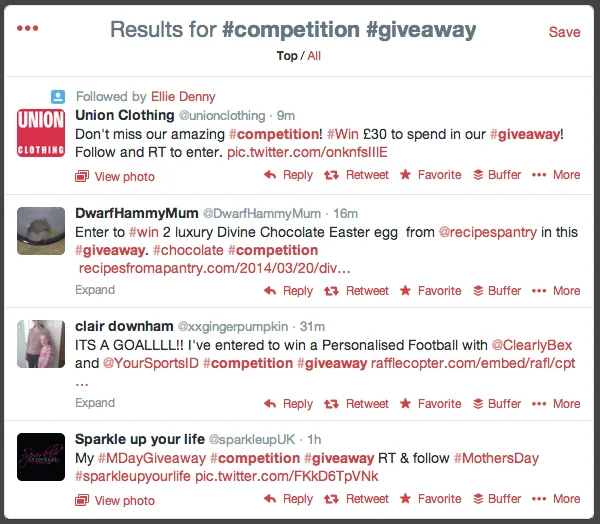
4. Used freemiums to create a viral loop
Around 30% of our new signups come directly from branding in our widgets, or from seeing our contests featured on other sites. This brings us a stream of passive leads without having to invest more into paid acquisition:

Andrus Purde
There were three things that helped Pipedrive get it's first 1,000 paying customers:
1. Address the pain
After looking at Dave McClure's brilliant "pain-killer vs. vitamins" slides I realised we realized we could and should have less features compared to competitors as long as our product eased the pain better.
2. Getting the product in the hands of the right people
On month four our revenues barely covered our hosting costs and we were growing a measly 10-20% per month. So, we got the product in the hands of bloggers, influencers and thought leaders who could review and amplify our product.
We tried several other channels, but nothing gave the tangible results of the next two channels:
- Applying to incubators like AngelPad, YCombinator and Seedcamp to meet people with big networks. We applied and talked to many, got invited to AngelPad in the end and spent three months among entrepreneurs and mentors, most of the time pitching and talking to people.
- AppSumo deals worked really well for us too.
3. Make signing up as easy as possible
We simplified the homepage and redistributed text to other pages:
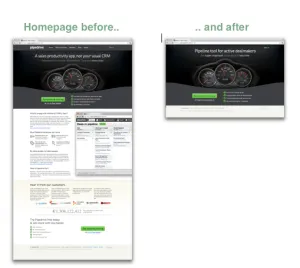
(Source)
These changes resulted in 3 times higher conversions from visits to sign-ups.

Alina Vandenberghe
In the beginning, we tried a freemium strategy that helped us get a few clients in the door, But, that proved less effective.
After that we just went to meet in person with our target audience at events. We asked them if they had the problem we were solving for. And if they were willing to pay to solve it. 3 out of 4 said yes and agreed to a second meeting. Out of every 3 demo meetings we were closing 1.
Almost every customer we acquired referred us to at least another account. Word of month has been the strongest for those first hundreds users.
I'm grateful because those first users had very high standards and as a result our product just got better and better
We target sales people, and because of the social aspect of this persona, events happen all the time!
On meetup.com, Eventbrite there's lots of them. Then there's Saleshacker, Saastr, Dreamforce (of course), rainmaker, revenue summit.
In our case we started with Saastr

Robbie Richards
As a search marketer, I naturally started with SEO and content marketing. I created a basic SEO services landing page for my agency, and then leveraged my personal blog to drive targeted traffic to the page. I wrote articles around various search topics, and got them ranking top 3 for queries like "SEO case study".
There were a few tactics I layered on top of this:
1. Used Google Analytics to identify pages with the most organic traffic each month. I then added social proof and ad units that linked to the campaign landing page.
2. Built a conversion focused home page that featured social proof from reputable industry experts, and included a clear call-to-action to the campaign landing page.
3. Linked to the services pages from the blog's main navigation.
4. Included a P.S. "hire me" line within targeted broadcast and autoresponder emails so that my services were continually exposed to the almost 15,000 subscribers on my email list.
Basically, I took an established channel and looked for ways to channel existing targeted traffic through to bottom funnel landing pages. To scale, I have now built out a massive keyword-focused content calendar to drive more organic traffic, grow my email list, and scale lead generation.
This simple strategy has generated over 80 leads, and helped skyrocket agency revenue in just 6 months:
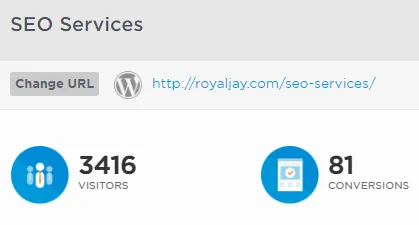

Tom Piamenta

Jordan Edelson

Anurag Shah
Aureus is focused on the Insurance industry and since it’s an enterprise sale it usually works best if driven top-down.
We identified a couple of consultants & advisors who had good industry networks and connected us to a few CEOs. We managed to convince one of the CEOs to give us a pilot, converted to a full contract when it was successful.

Paul May
The strategy for acquiring our first paying customers was all about relationships and "co-development."
We identified a handful of customers that we felt would have a need for our service, and worked directly with them on the spec for the solution, and they naturally turned into customers when the product was ready.
The one risk this carries is that you have to take care to ensure that you're building a product that will have value to a broader audience.
After launching, we relied heavily on blogger outreach and digital PR. We identified influential bloggers and publications in our market and ran a fairly traditional product launch campaign. It resulted in both niche mentions/links (TopRank Blog, SearchEngineLand, PRWeb) and placements with big publishers (TechCrunch, Mashable, etc).
This drove of a lot of referral traffic.

Brett Owens

Vijay Khandekar
I launched a low-priced ebook of high-quality teaching SEO, with case studies and example sites that showed those sites making money. To sell it, I set up a dedicated landing page, approached all the top promoters of SEO products in the industry and arranged a launch.
To keep the promoters motivated, I paid 100% commissions on sales. Then, whoever bought the ebook, offered them a 'founders membership' to a minimum viable product of SERPed.
I used the user feedback to improve the system, get testimonials and intros to their contacts.
Later we grew a bit by acquisition, purchased a low priced, old membership site that was still getting traffic and turned it into a lead magnet. I rewarded users who shared the word of that site with a free upgrade.
This allowed for low priced, targeted leads that I could then funnel into SERPed.

Vinay Patankar

Chris Dreyer
I landed the first client for my company (Rankings.io) by leveraging my sphere of influence. I sent messages out to my entire network on LinkedIn as well as my friends and family.
Marketing a new business to your network is a common tactic for a lot of companies and sales professionals just starting off. The people that are close to you are often the easiest people to convert because they already know and trust you.
Getting clients in this way also helps you get your feet wet. You get the experience of “pounding the pavement” to drum up new business, and you also get practice in selling yourself to your potential clients.
The second part of that strategy was offering my services at a discounted rate or free introductory services. In the beginning, I did a ton of SEO work for no charge to earn the trust of the client.
It's not typically a good idea to price your product or service below market value however if you are just starting out it's a good strategy to build up your name. I offered discounted services to friends, family, and acquaintances. I also marketed things like ‘Free Consults’ as foot-in-the-door offers to potential clients.
These tactics helped my business on a lot of levels. By offering incentives and lower rates in the beginning, I was able to more quickly build a solid reputation for the company. It knocked down any barriers that may have been in the way of making a name for myself.
The business quickly grew once people witnessed the reliability of the company and the high quality of the services I was offering.
Offering the free consultation gave me a chance to get people on the phone and showcase my knowledge. Even if you manage to get someone on the phone for a sales presentation, it can still be a challenge to get them signed up. If you offer something of value like a free review of their web presence, it takes the pressure off of you and them.
That allowed me to feel comfortable showing them what I know and it enabled them to give a thoughtful appraisal of my services without being pressured to buy.

Nick Persico
Here are some thoughts on how we got our first customers when we launched Close.io back in 2013:
Find prospects that agree with your worldview. We built a CRM that prioritizes communication. So we only targeted prospects we knew agreed with our philosophy through how they conduct themselves in their sales process.
Have an opinion. We believe people buy from people, regardless of what technology is out there. Impose your opinion / worldview on your prospects instead of just agreeing with everything they say.
Help first, sell later. Our qualifying process centers around their sales process and what they are trying to improve. We try to add value by helping them first. That will increase the likelihood they will believe your product is part of the solution.

Scot Wingo

Ajay Goel

Mark Somol

Mike Kawula
Here at Social Quant we ate our own dog food and used our tool to get our first few customers and continue to do so 18 months later.
The strategy: Twitter marketing.
Our company helps businesses get more Twitter followers, so it makes sense to fish where the fish are – on Twitter.
We followed these three steps that will work for any business:
We optimized our Twitter profile. We set up a good Twitter cover, bio, profile picture and, most importantly, a pinned tweet. A pinned tweet stays at the top of your feed on your profile so it’s the first tweet someone see’s when they land there.
We made this tweet a link to an opt-in page to download a free eBook: The Ultimate Guide to Get More Twitter Followers (see what we did there?).
We used our own tool. We used Social Quant to follow business accounts on Twitter who were actively engaging with influencers we knew had an audience likely to be interested in our tool.
BuzzSumo is an extremely helpful tool to find those influencers. By following this strategy, 10-20% of those we followed came and looked at your Twitter profile.
And since it was optimized as described in step 1, they often followed is and clicked on our Pinned Tweet (a landing page for an opt-in to build our email list).
That said, you don’t need to use a tool to follow this strategy. Twitter Advanced Search is a great feature to find discussions taking place about your niche and find relevant users to follow on your own. Doing this 20-30 minutes a day will consistently get you relevant, engaged Twitter followers.
We tweeted – a lot. Consistently sharing content on Twitter will keeps us in front of our Twitter followers. We share content every 30 minutes, 24 hours a day. This drives us over 20,000 visitors to our website each month.
Not sure if sharing that much data is for you? Data shows that those who tweet more than 50 times a day receive exponentially more traffic compared to those who tweet less than 10 times a day.
Following this 3 step process built us a list of more than 25,000 emails over the last 18 months!
Once in our email system, we invite them to a Webinar to learn more about Twitter marketing for entrepreneurs or to a Free 14-day Twitter Marketing Challenge to help them optimize their Twitter performance.
Both of these offers lead people into our free trial. And at the end of a trial they receive a coupon to use our service.
This process can work for any business. Bonus, most of it can be automated so you can work on other growth strategies like influencer outreach, content marketing, cold email and dozens of other effective techniques.

Alex Yumashev

Ravi Parikh

Brian Hamilton
TAS or Target Account Selling is a methodology which was effective in defining the pathway to securing some of the first orders at RealWear.
TAS methodology was instrumental in understanding the ecosystem of partners and end customers, and is a platform we are focused on implementing across the organization for our sales and marketing teams as we look to scale our business.

Linda Souza
My advice:
Work your network. If you’ve built a solid reputation, nurtured your professional relationships, and been generous with your time and advice (within reason, of course!), people will want to help you.
Ask for introductions. A warm introduction will save you weeks or even months of time and get you much further ahead faster.

James Vecchio

Sam Hurley
Twitter and LinkedIn truly rocketed my growth, gained me recognition in the marketing industry and resulted in clients recurrently paying for influencer promotion.
Automation is the key to rapid presence. Think Edgar, IFTT, Buffer, Crowdfire, Commun.it, Sprout Social and Crate.
It just doesn’t make sense to try to run everything manually, especially across multiple platforms.Who the hell has time for that? That only prevents growth. What I do make time for is engagement! And you should too.
Here are some stats from my Twitter account:
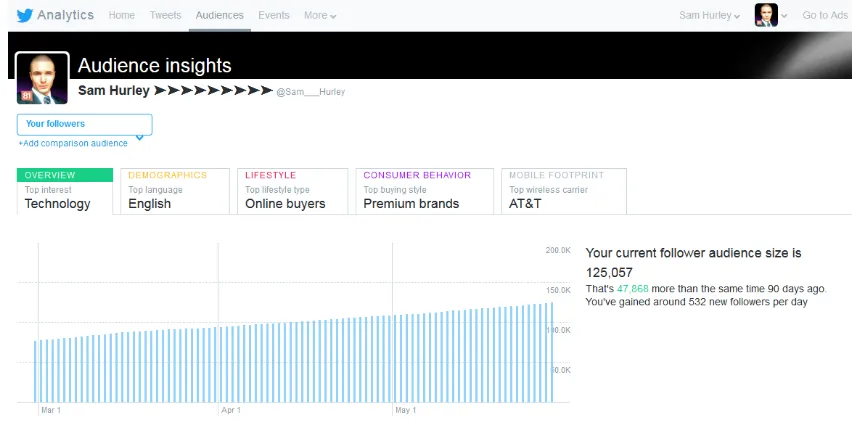

Michael Cheng

Yulia Khansvyarova
A problem-oriented approach works best. People don’t know anything about your product yet. It's too early to tell them about all amazing product features. You need to use another strategy.
The best strategy will be gathering relevant keywords (those which are typed in search engines by people who need to solve a specific problem). Make a lot of step by step guides, that can explain how to resolve the problem with your product.

Michael Cole

Connell McGill

Tim Lawton
I would say the number one thing that landed our first few clients was networking. My co-founder and I relied heavily on our personal networks and relationships to get meetings and to have people vouch for us.
I would imagine any entrepreneur is starting something they have experience in and by default know people that will be valuable to that endeavor. It's not what you know it's who you know!
People helping people. Powerful stuff.

Mathan Parasuram

Gil Allouche

Blaine Bertsch

Yoav Shalev

Ilan Kasan

Raul Garreta

Mada Seghete

Nick Edwards
